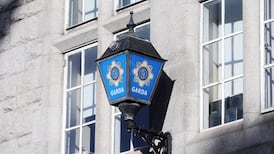The running of our A&E departments may sometimes resembleFawlty Towers,writes PadraigO'Morain
Certainly, some of the contents of the Comhairle na nOspidéal report on A&E suggests that Basil Fawlty may be alive and well and running the Irish hospital system.
According to this account, the patient sent to A&E by an experienced family doctor is then examined again by a less experienced junior doctor to find out what's wrong and if he or she should be admitted.
If the patient is then admitted, he or she will be examined in an in-patient ward again to find out what's wrong and if he or she should be there at all.
The junior doctor, anxious not to make a mistake, may order lots of tests. Unfortunately, in many hospitals, the people who do the tests shut up shop at five o'clock and go home as the queues lengthen in A&E.
Meanwhile, over in the wards, there's a consultant who is determined that these inconsiderate patients in A&E won't get "his" beds. The best way to hold on to a bed is to keep a patient in it until the next planned patient is due. The patient who is in the bed may be fit to leave but must stay until the replacement arrives, so as to "save" the bed.
And there's a good chance the consultant won't be there at the weekend or at night to discharge this or any other patient, so the bed stays "saved".
Mind you, some of the patients aren't much better than the doctors. Many don't need hospital treatment at all and only go to casualty with their minor ailments because it's more convenient than going to a GP. How anyone can find it more convenient to sit for hours in A&E than to go to the GP is quite baffling.
Shouldn't these minor cases be screened out and made to wait their turn? Of course, but many hospitals still have no formal system for doing so and this increases the risk that the wrong patients could be held back.
If all this seems outrageous to people working in A&E departments or on in-patient wards, don't blame The Irish Times. Download the report from http://www.comh-n-osp.ie which is the excruciatingly-named website of Comhairle na nOspidéal and read it for yourself.
Comhairle na nOspidéal reports are important. The comhairle regulates the appointment of consultants and therefore has a big say in how hospitals are organised.
It suggests a range of measures to bring order to the chaos of A&E. Among them are:
Major regional hospitals would deal with the most serious emergencies and their A&E departments would be staffed by consultants. These regional emergency departments would be located in Dublin (St Vincent's University Hospital, Beaumont Hospital, Mater/Temple Street, St James's Hospital, Tallaght Hospital); Kildare (Naas, sharing with Tallaght); Offaly (Tullamore); Limerick (Mid Western Regional); Louth (Our Lady of Lourdes, Drogheda); Sligo (Sligo General); Donegal (Letterkenny); Waterford (Regional); Cork (Cork University Hospital) and Galway (University College Hospital).
The next tier of hospitals would have one or two emergency consultants. They would handle most emergencies.
The third tier would have nurse-led clinics for minor illness and injuries and these nurses could call on doctors in the hospital where necessary.
Emergency departments may need their own X-ray and diagnostic services, available at hours that suit them.
Hospitals would be reorganised to have separate, largely "protected" beds for emergency patients, planned (elective) patients and day patients. This point was particularly welcomed yesterday by the Irish Medical Organisation.
Fundamentally, the report recognises that the whole system needs many more beds if it is to function well. And if all that happened, even Basil Fawlty might be able to sort out A&E.









